It’s spring in New York City and time for some frivolity! So we’ve just released an unusually whimsical episode of Bowery Boys Movie Club to the general Bowery Boys Podcast audience, exploring the 1984 comedy treat The Muppets Take Manhattan.
And that’s not all! Sticking to the theme of 1980s New York City, the latest episode of the Bowery Boys Movie Club explores the film Coming To America and its rich historical details. An exclusive podcast for those who support us on Patreon.
To listen to that episode and to past Movie Club episodes (discussing Do The Right Thing, Breakfast at Tiffany’s, The Warriors, When Harry Met Sally and many other films) become a Patreon supporter today
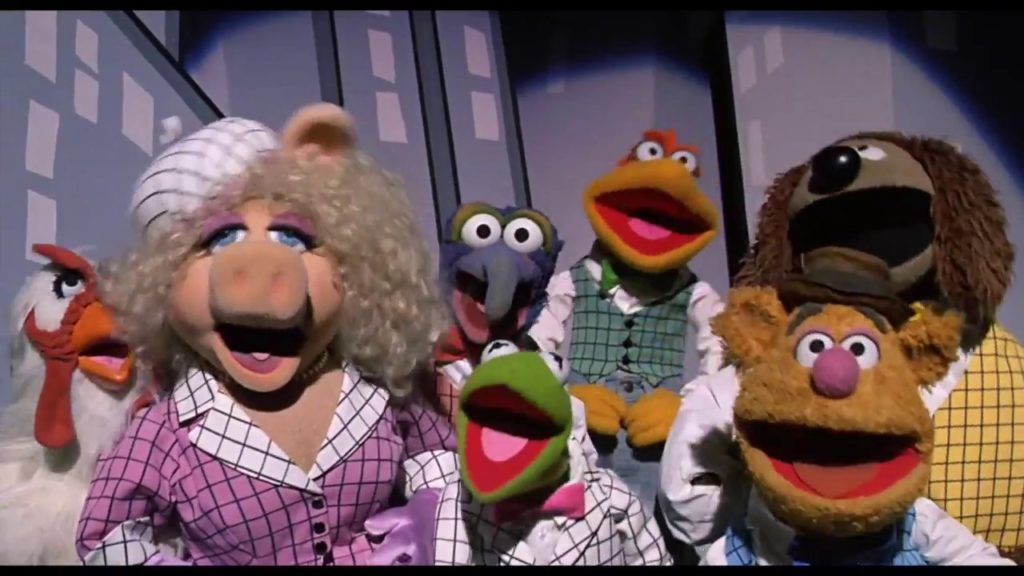
TOGETHER AGAIN! In 1984, Jim Henson brought his world-famous Muppets to New York for a wacky musical comedy that satirized the gritty, jaded environment of 1980s Manhattan while providing fascinating views of some of its most glamorous landmarks.
Listen in as Greg and Tom recap the story and explore the many real New York City settings of the film — from the Empire State Building and Central Park to the corner booth at Sardi’s Restaurant and certain luncheonette in the area of today’s Hudson Square.
The Muppets Take Manhattan expresses an unfiltered enthusiasm for the promise of New York City at a time when national headlines were filled with tales of the city’s high crime and budget problems.
Can Kermit and Miss Piggy (and their roster of guest stars like Art Carney and Joan Rivers) bring magic back to the Big Apple?
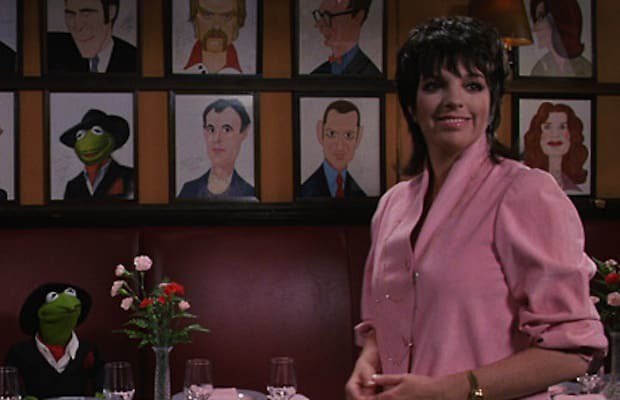
How do I listen to all episodes of the Bowery Boys Movie Club? Once you’re signed in on Patreon, you’ll see a private RSS link that can be put directly into your favorite podcast player. Even easier, it can also be played directly from the Patreon app if you’re signed in.
Your support on Patreon assists us in producing our podcast and website and it helps as we endeavor to share our love of New York City history with the world.
Should you watch the movie before you listen to this episode? This podcast can be enjoyed both by those who have seen the film and those who’ve never even heard of it.
We think our take on The Muppets Take Manhattan might inspire you to look for the film’s many fascinating (but easy to overlook) historical details, so if you don’t mind being spoiled on the plot, give it a listen first, then watch the movie! Otherwise, come back to the show after you’ve watched it.
Thank you for supporting the Bowery Boys podcast!
This episode was inspired by an ‘obsessive guide’ post that Greg wrote a few years ago. That article is presented here in its entirety, featuring many additional New York City details from the film.
“We did our first film in Los Angeles and our second in London. I thought it would be nice to do the next one in our hometown.” — Jim Henson
In The Muppets Take Manhattan, our friendly assortment of animal and animal-esque protagonists arrive in New York City to put on a variety show. But, of course, Jim Henson and his creations had been here for over a decade already, the critical ingredient of PBS’s Sesame Street, which originally filmed on the Upper West Side.

By 1982, production on the children’s show had moved to 55th Street and Ninth Avenue, but the Muppets had gone global — with a successful syndicated variety show (The Muppet Show, from 1976 to 1981, produced in England) and two box office hits, The Muppet Movie and The Great Muppet Caper.
Given the theatrical nature of their own weekly show — set in a theater, after all — it made sense to return the Muppets to New York, to finally bring the beloved characters to a cinematic Broadway stage.
Below are 21 often trivial, mostly historical points of interest from Henson’s zany, most exuberant homecoming:
NOTE ON TIME AND SETTING: The Muppets Take Manhattan, directed by Frank Oz, was released in the summer of 1984 and filmed the previous summer in a variety of New York and New Jersey locations, with interior shots at Empire Stages in Long Island City (today Paris Film Productions). However it’s set sometime in the summer of 1982, judging from flying calendar pages that set September 1 on a Wednesday.
“Broadway? But this show isn’t good enough for Broooadway!”
1. The film opens with some terrific overhead shots of Manhattan, before taking us over bridges to Poughkeepsie, NY, the home of the fictional Danhurst College (as played by Vassar College). The Muppets are on stage, delighting an over-enthusiastic crowd with their new variety show ‘Manhattan Melodies’. With charming naivety, they decide to bring the show to New York City.
‘Manhattan Melodies‘ was actually the name of a successful New York radio show in 1932, broadcast by WOR from Times Square.
History was made with a unique multi-location broadcast featuring The Do Re Mi Trio, three voices recorded from three different skyscrapers. “‘Do’ was on the Empire State [Building], eighty-six stories in the air, ‘Re’ was on the seventy-first floor of the Chrysler Building, and ‘Mi’ was on the roof of the Manhattan Bank Building [aka 40 Wall Street].” [source]
Port Authority in 1980, photo by Jeremy Gilbert/Flickr
2. The Muppets arrive through the unglamorous hallways of the Port Authority Bus Terminal. In the early 1980s, this was considered one of the most crime infested areas of Midtown, a marketplace for prostitution and crack dealers. The bus terminal was “an ideal place for these illegal activities” during this period due to a recent expansion that left many corridors unguarded at night. Crime here “escalated to an uncontrollable level.”
Despite this, the Muppets decide to move into a wall of lockers. “I’ll trade with anybody who has a Jacuzzi!” says the free-spirited Janice.
3. Animal wears an I HEART NEW YORK T-shirt throughout the film. This was a rather new emblem then, created in 1977 by graphic designer Milton Glaser. The irony of loving a particular city that was in a serious social and financial crisis was not lost on the designer.
“It was the mid-seventies, a terrible moment in the city. Morale was at the bottom of the pit,” Glaser said in an interview with The Believer. “….[T]hen suddenly the city simultaneously got fed up and said, ‘It’s our city, we’re going to take it back, we’re not going to allow this stuff to happen.” And part of that was this campaign.”
He gave away the rights to the design, so he gets paid nothing for the use — in the film, on tourist T-shirts, or anyplace else.
4. With Variety Magazine in hand, the Muppets venture off to pitch the show to big Broadway producers. The first, disreputable Martin Price (Dabney Coleman), has offices at the Paramount Building (1501 Broadway) in Times Square.
Originally built for the film company Paramount Famous Lasky Corporation in 1926, it rapidly became a key center for Broadway theater wheeling-and-dealing, “a hive of suites where ideas are hatched, partnerships forged, contracts signed, legends born,” according the New York Times.
In the basement was a Walgreen’s lunch counter, popular with struggling actors and writers, “a poor man’s Sardi’s”.
Between 1979 and 1982, there were over 7,000 reported murders in New York City. (In comparison, there were less than 2,000 between 2009-2012.). This partially explains the dialogue exchange between Kermit and Price: “Well, it’s all about life in the big city.” “The big city? Cops, shootings, car chases — that kind of stuff?“
5. With no luck finding a producer, the Muppets sullenly trudge down a street in the West Village — Varick Street, between Downing and West Houston. You can see the subway entrance in this scene as well as the green Graphic Arts Center Building. (Just out of view — the Film Forum.) They find solace at Pete’s Luncheonette, which resides on the Downing Street corner. Today it’s a McDonalds (at left).
6. Rizzo the Rat delivers a hamburger with no patty to a customer. He turns and shouts to Pete: “Hey Pete. Where’s the beef?” The first Wendy’s commercial featuring the ‘Where’s The Beef’ lady Clara Peller debuted in January 1984 — after principal filming was completed — so this is most likely a weird coincidence.
7. Hopeless that their musical will ever be produced, everyone decides to leave town except Kermit. Scooter bikes away through New Jersey, Fozzie hops a train hobo-style, and Dr. Teeth and the Electric Mayhem hitch a ride to the Pennsylvania Turnpike. But, no surprise, Miss Piggy’s departure is the most glamorous, taking one of Thomas Edison’s original 1930 electric traincars from Hoboken Terminal.
“You hear me, New York? We’re going to be on Broadway. You hear that, New York? I’m staying here! The Frog is staying!”
8. A dejected Kermit the Frog finds some renewed encouragement when he visits the Empire State Building‘s observation deck, looking north over the darkened city. To the right is the Pan Am Building which would remain branded with the airline’s logo until 1992, when it would become the Met Life Building.
However, presuming this scene was filmed in 1983, Kermit would not have been the only animal superstar on the Empire State Building. In celebration of the 50th anniversary of the movie King Kong, a 3,000 lb nylon King Kong balloon was attached to the top of the building. (Photo courtesy Hamburg News/New York Daily News)
9. Kermit meets up with Pete’s daughter Jenny, a wanna-be fashion designer, in front of the Plaza Hotel, with everything in Grand Army Plaza looking almost the same as it does today.
For some reason, those grumpy curmudgeons Statler and Waldorf are sitting on a bench, sunning themselves. The duo has a rather profound link to New York City history; they’re both named for classic New York hotels — the Statler (today’s Hotel Pennsylvania) and the Waldorf Astoria. And, yes, Waldorf’s wife is actually named Astoria. She appeared in this 1979 episode of The Muppet Show starring Dizzy Gillespie.
10. Miss Piggy is spying on Kermit from under a scaffolding in front of Bergdorf Goodman. (Just as we missed out on a shot of the Film Forum earlier, so too is Bergdorf’s neighbor The Paris Theater cut from view.) It’s later revealed she’s working at a perfume and makeup counter with Joan Rivers. This was not far-fetched casting; before making it big as a comic, Rivers worked as a fashion consultant for Bond Clothing Stores and even designed window displays for Saks Fifth Avenue and Lord and Taylor.
11. What are the rest of the Muppets up to? Scooter works at a Cleveland movie theater, with the Swedish Chef manning concessions. The film playing there is Attack of the Killer Fish in 3D, an obvious parody of 1978’s Attack of the Killer Tomatoes.
Believe it or not, Killer Tomatoes owes a small New York film festival for some of its cult cred. Two years after it was produced, the film piqued the curiosity of the media when it screened at the World’s Worst Film Festival at the Beacon Theatre in 1980, co-hosted by movie critic Michael Medved.
The film festival was a de facto Woodstock for schlock cinema, with Killer Tomatoes a star attraction. Said co-writer John DeBello, “The Wall Street Journal had the poster on its front page, the CBS Evening News used the song to close their credits. When people heard the title, just like when I heard the title, people loved it.” At right: Killer Tomatoes at the Beacon Theatre.
12. Sardi’s Restaurant takes center stage of perhaps the film’s most famous scene, as Kermit, disguised as an elegant producer, sends Rizzo’s rat friends in to create a ‘whisper campaign’ about his new musical.
Sardi’s has been inextricably linked to the Broadway industry since its opening in 1927, hosting hundreds of cast parties, business meetings and probably a few professional break-ups. It even gave birth to the Tony Awards. (You can listen to the whole fabulous tale of Sardi’s in our 2011 podcast.)
Vincent Sardi Jr., who appears in the film (see below), hosted the glittering greats of Broadway for over a half-century. He was considered the unofficial “Mayor of Broadway.“
Kermit also squeezes his own likeness onto Sardi’s famous wall of caricatures. To do so, he must take down that of Liza Minelli, which does not please her.
In fact, not only does Liza’s caricature still appear at Sardi’s, Kermit’s is still there too. (At least last time I checked!) Liza’s is by Brooklyn artist Richard Baratz. Look for his other likeness of Robert De Niro, Dustin Hoffman, Al Pacino, Whoopi Goldberg and dozens more. Kermit’s? No one knows who drew that.
13. Jenny consoles Kermit in Central Park, somewhere on Cherry Hill, next to Bethesda Fountain. Near this spot was the site of New York City’s first-ever frog jumping competition in 1935, inspired by Mark Twain’s short story “The Notorious Jumping Frog of Calavaras County.”
Local children’s organizations could sponsor one of 175 frogs shipped in from Louisiana. But this was not a trivial event. Ten thousand people took part, with former governor Al Smith presiding over the event and boxer Jack Dempsey serving as referee. The winner was a female frog named Abbie Villaret. (You can see a picture here.)
14. Central Park is depicted as a destination for people in exercise clothes and a place to ride through in carriages. Oh, and the place you get mugged. While Piggy is spying on Kermit, a mugger grabs her purse. (The mugger is played by Gary Tacon. Today he’s an accomplished stuntman and was recently in The Wolf of Wall Street.)
Crime was a factor people assumed was a regular component of New York’s most famous park. In 1982, the year it set an attendance record of 14.2 million, there were 22 reported rapes and over 700 robberies. [source] Although it would take several years to meaningfully reduce crime, the park’s infrastructure steadily improved, thanks to the efforts of the Central Park Conservancy.
Oh, by the way, Piggy borrows roller-skates from Gregory Hines, chases down her assailant and retrieves her purse. Here’s a video of some fine roller-skating style exhibited in the park during the 1980s:
15. Of the many special guests who appear in the film, the hottest star of the moment was perhaps Brooke Shields. The Blue Lagoon star filmed this cameo at Pete’s Luncheonette a few months before entering Princeton:
Masterson the Rat: Do you believe in interspecies dating?
Brooke: Well, I’ve gone out with a few rats if that’s what you mean.
In 1982, Shields briefly dated John F. Kennedy Jr. and took Ted McGinley to her prom.
16. Meanwhile where’s Gonzo? He’s trying to make a living on the road, performing in an aquacade in Michigan. But these acrobatic scenes were actually filmed closer to home — Rye Playland, the historic amusement park overlooking the Long Island Sound. Gonzo’s fiery derring-do takes place by the Playland Lake (in the top right corner of the 1927 picture below, courtesy NYPL).
Four years after Gonzo conquers the park, a young boy consults an arcade fortune teller here at Rye Playland and becomes Tom Hanks in the movie Big.
“Just because the whole thing is crazy doesn’t mean it won’t make it on Broadway!”
17. Finally, somebody’s interested in ‘Manhattan Melodies’! Playing esteemed producer Bernard Crawford is Art Carney, who had acted on Broadway for almost thirty years by this time, not to mention, of course, his performance as Ed Norton on The Honeymooners.
But it’s Bernard’s son Ronnie who takes on Kermit’s script to produce and direct. He’s played by Lonny Price in a role that would almost precisely predict his future.
Price was an in-demand theater actor (best known for Broadway’s “Master Harold”…and the Boys) before Muppets. Afterwards, he became an in-demand theater director, recently helming 110 in the Shade with Audra McDonald and a new variation of Camelot with the New York Philharmonic.
18. Things are looking up for Kermit when he is suddenly hit by a cab in front of Madison Square Garden. And not just any cab, but a Checker Taxi, which had actually ceased manufacturing in 1982. They stayed on city streets for several years after. According to the New York Times, there were ten left in 1993. The final one left service in 1999. Photo above courtesy Inside New York.
19. Kermit’s accident gave him amnesia, and confused about his identity, he gets a job at Mad Ave Advertising, a Madison Avenue advertising firm. Decades before Mad Men, Kermit is immediately thrown into pitch meetings, displaying a Don Draper-like salesmanship. Unlike the offices of Sterling Cooper, female frogs seem to be treated equally. (At least in name — Bill, Gil and Jill.)
1982 was a turbulent year for New York advertising firms with dozens of buyouts and mergers, including one between Madison Avenue’s two largest firms — Saatchi and Saatchi and Compton Advertising — worth over a billion and a half dollars. Given that Mad Ave Advertising is seeking the assistance of an amnesia patient, it doesn’t seem like this firm will be long for this world.
20. The Muppets tear through Manhattan, looking for Kermit. Scooter races his bike by the Shubert Theater and its smash hit A Chorus Line. In September 1983, the show became Broadway’s longest-running show of its day. By the time The Muppets Take Manhattan opened in movie theaters, a movie version of Chorus was already begun filming in New York.
Other Muppets search the New York Public Library, Central Park, even the sewer.
But it’s Gonzo that gets the privilege of interrupting Mayor Ed Koch during a press conference at Gracie Mansion.
Gonzo: I’m looking for a frog that can sing and dance!
Koch: If he can also balance the budget, then I’ll hire him.
Koch had a special affection for Gracie Mansion, throwing weekly dinner parties there and organizing press conferences on the porch. Having the mayor of New York live elsewhere, said Koch, would be “like asking the president not to live at the White House.” [source]
The mayor made several appearances with the Muppets throughout his tenure. The mayor’s itinerary from June 28, 1984 reads as follows: “Courtesy call with Yasushi Oshima, Mayor of Osaka, Japan; views new uniforms for Taxi and Limousine Commission inspectors; accepts check for $500,000 donated by Mobil Corporation for the Summer Youth Employment Program’s Clean Team; attends Financial Control Board meeting; drops in at reception celebrating the opening of The Muppets Take Manhattan.”
The Biltmore Theater in 1944
21. Finally, Manhattan Melodies opens! And on a swanky stage too — the Biltmore Theater. A stage that unfortunately is on its last legs in the film.
The Biltmore opened in 1925 and hosted dozens of shows in Broadway’s golden years. After briefly becoming a CBS television studio, it reverted back to live theater and was most notably the home for the Broadway transfer of Hair in 1968. The line-up of shows that appeared here in the early 1980s include Deathtrap with Victor Garber and the Garry Trudeau-written musical Doonesbury.
However, in 1987, the theater was ravaged by fire, most likely arson. According to the New York Times report, “Hypodermic needles were found inside the theater, indicating that drug users may have been using it as a shooting gallery, and storage lockers had been rifled.”
The theater finally reopened in 2008 — under the ownership of the Manhattan Theatre Club — as the Samuel J. Friedman Theatre, named for the renown Broadway publicist.
As quickly as the show begins, however we cut to a shot of a wedding chapel for the nuptials of Kermit and Piggy. Nearly all the existing Muppets appear in this scene. (Muppets Wiki actually has a complete seating chart.) Piggy’s gown gives a subtle nod to that of Princess Diana’s when she wed Charles in 1981.
AFTERWORD: The Muppets Take Manhattan was a modest box office success when it opened in July 1984. The film was up for the Academy Award for Best Music, Original Song Score. But the film lost the award to Prince for Purple Rain.
The artist took to the stage wearing a garment which Miss Piggy would have desperately coveted:
My thanks to the Muppets Wiki for the inspiration for this article.. All images are courtesy Tri-Star Pictures/Jim Henson

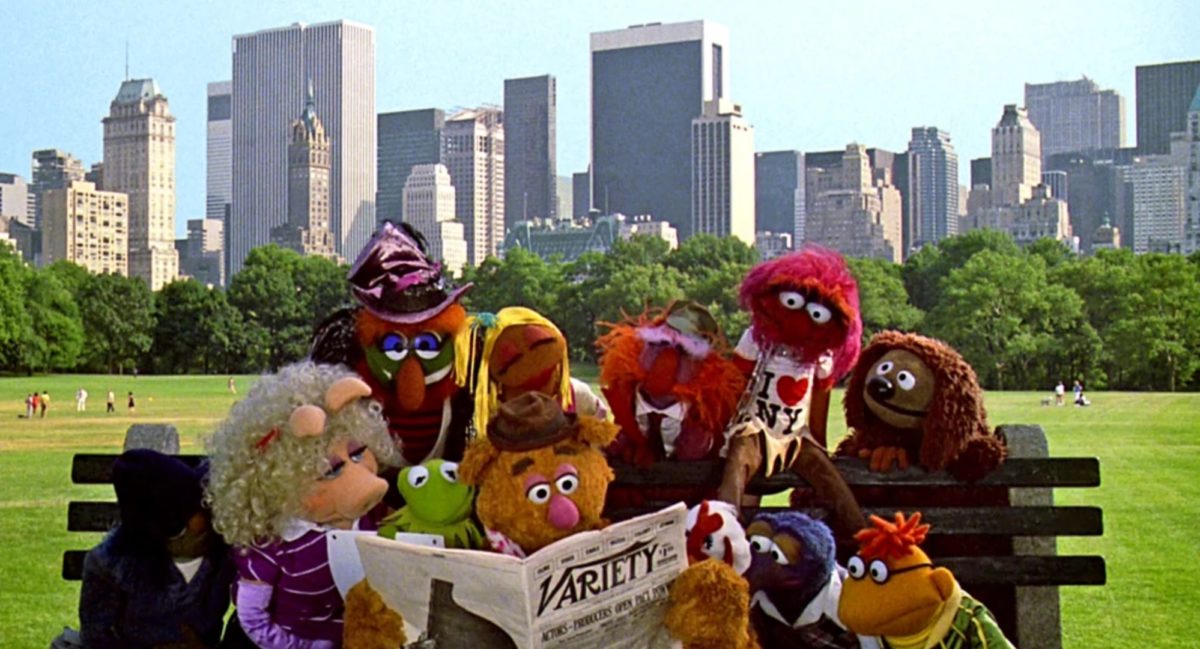





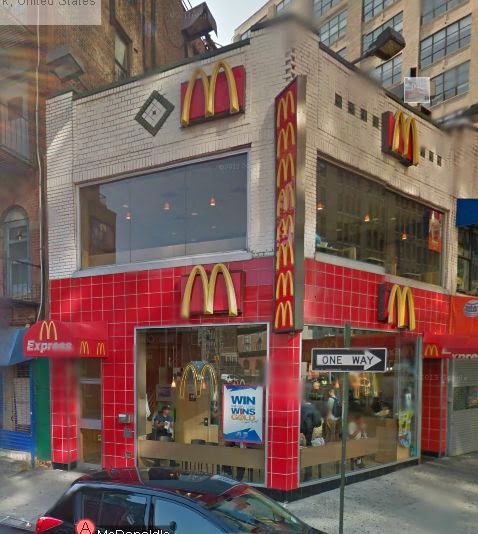


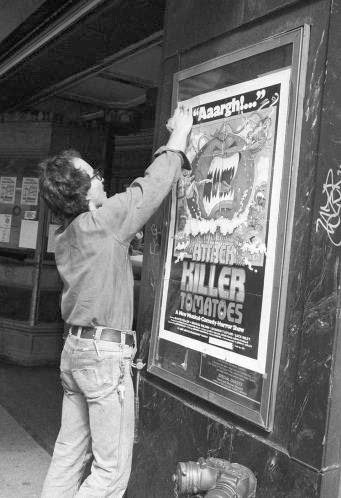
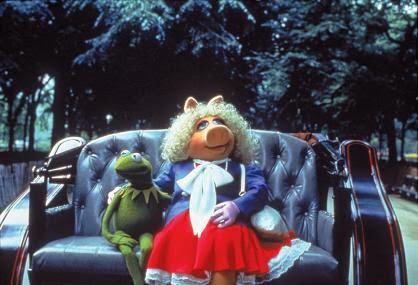
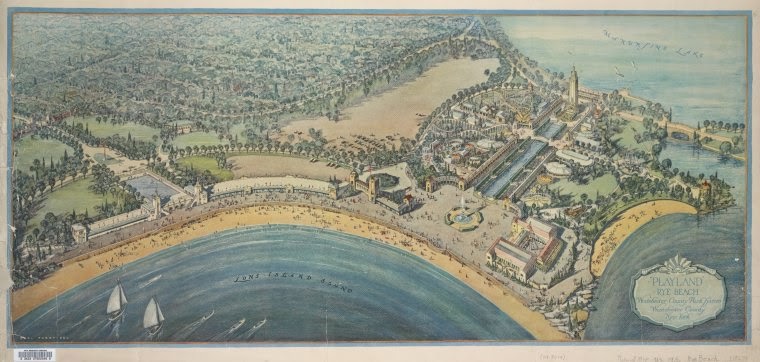



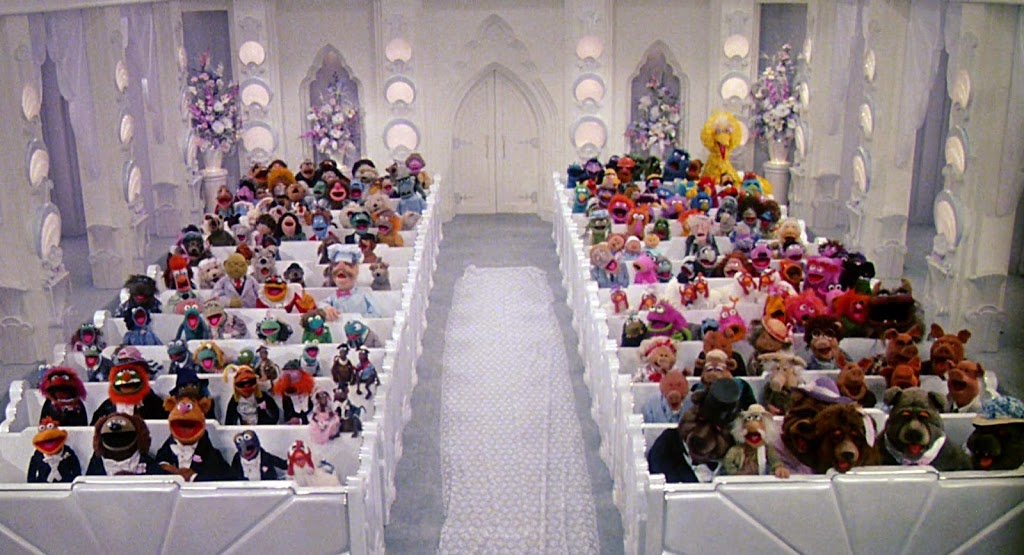
10 replies on “The Muppets Take Manhattan: The Bowery Boys Movie Club in Jim Henson’s New York”
Fantastic! This takes me back to my childhood (or a little past my childhood). If only we had more Muppets in Manhattan. And the other boroughs, I guess.
Another interesting fact: The receptionist for the first Broadway producer they visit is none other that Start Trek TNG’s Gates McFadden (Dr. Crusher)
Really interesting! I’m sad that I still haven’t managed to see anything muppet-related on my trips to New York City. Are there any shows at the moment? I especially just wrote my travel agent on http://new-york.hotelscheap.org/ to ask him if he can settle me with something. The only thing I’m worried about is that the cards aren’t going to be cheap for sure.
Not to mention that Prince wore a garment that Miss Piggy would have loved; but, Kathleen Turner had a dress only Zuul would desire!
Do you have any idea which theater served as inspiration for the one Scooter works at in Cleveland? It looks a lot like the Cedar Lee Theater in Cleveland Hts – built in 1925!
The NY of I Love NY isn’t the city, it’s the state. That was a campaign of the NYS Dept. of Tourism.
[…] Continuing from Sesame Street Presents Follow That Bird is The Muppets Take Manhattan, yet another film I watched a lot as a kid. According to The Bowery Boys article, “The Real ‘Muppets Take Manhattan’: 21 Wacky Historical Details From Jim Henson’s Big Aapple Ad…“: […]
A big thank you to The Bowery Boys for all the great work keeping the history of NYC alive! I can’t help thinking that “Attack of the Killer Fish in 3D” is also a reference to “Jaws 3D” – released in 1983 when this film was in production.
You guys need to do your homework. Muppets did not “debut” on Sesame Street. Their debut was on a local show on the NBC TV station in Washington, DC (no, Muppets are not native New Yorkers) in 1954 and they appeared in commercials for local and regional advertisers. NBC maintained a direct link between New York and Washington and when the Dave Garroway Today Show needed somebody to fill a segment in a hurry, they would often call on Jim Henson. From that, the Muppets appeared on the Ed Sullivan Show and Rolf the Dog became a regular on the Jimmy Dean Show on ABC in 1963 (with other Muppets making occasional appearances).
👏 Jim was a #MasterofCinema and of fun. THE MUPPETS have been a childhood favorite gang since 1976! 👍